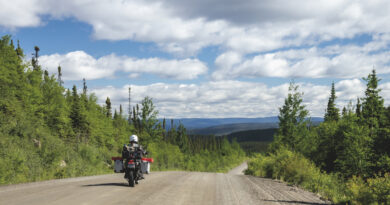Rehab (Part 2)
In Part One of this report, I described my cornering difficulties in the wake of brain surgery five years ago and my decision to seek rehabilitation via one-on-one instruction from the US Rider Academy at BMW’s Performance Center (BPC) in Greer, South Carolina. To recap: I realized over time that, while my operation had caused no other discernable lasting impairment, I’d lost some capacity for coordinating the many elements of turning a street bike at speed. I could easily remember all the things I was supposed to do, but my body would only process the related commands individually, instead of packaged together. Obviously, I needed to be able to run those programs in parallel, not sequentially, and I needed the majority to be automatic, requiring little conscious oversight.
As long as I rode at a casual pace, there was no problem, but when I tried to hustle through the twisties, I found myself making numerous errors as my attention flitted from one aspect of cornering to another, desperately trying to cover all the bases; it was as futile as herding cats. What used to be reflexive “muscle memory” now had to be directed by deliberate thought, a terribly inefficient alternative. I felt a bit like a stroke victim relearning how to walk. Lots of time and effort on my own wasn’t yielding progress, largely because I couldn’t figure out how to prioritize my focus; too many parts of the process seemed primary—where should I begin? Although I’ve taught many new motorcyclists the building blocks of cornering and have received extensive training myself over decades of riding, I couldn’t settle on how to start over. I needed a skilled instructor to guide me, and that person turned out to be Ricardo Rodriguez, Lead Motorcycle Instructor at the Academy.
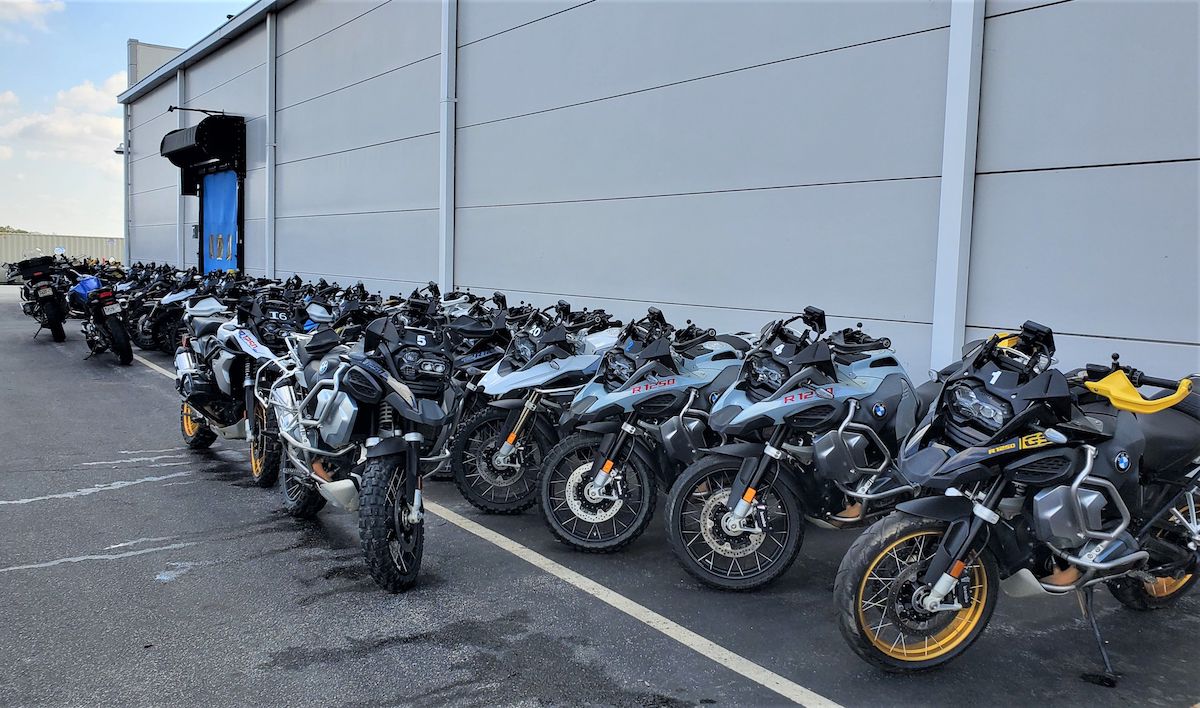
Given the highly individualized nature of the one-on-one training available through the BPC, the specific details that follow may have little overlap with the experience of anyone else who signs up for such instruction. However, the basic approach will be the same: Student and instructor collaborate on teaching methods tailored to pursue the student’s unique goals. In my case, that involved an in-depth discussion on the morning of my first half-day of training. (I’d split my day of 1:1 into two half-days in hopes of absorbing more with a night of sleep in between.) After filling out a little paperwork in the lobby/cafeteria area immediately inside the BPC entrance, I awaited Ricardo amidst small groups of (automotive) students and instructors. I was impressed by how the unadorned, straightforwardly functional space instantly created a comfortable yet serious learning environment. After introductions, Ricardo ushered me back to one of the nearby classrooms where our strategizing began.
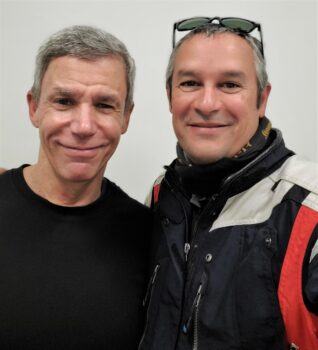
Ricardo was assigned to me because he’d talked with others in the past about odd neurologically related riding difficulties. This was a tremendous relief right away, allowing me to feel less weird and self-conscious about my own hard-to-articulate problem. He recommended we spend the first portion of Day One doing several exercises on the large, flat asphalt range, followed by some time lapping a small section of the adjacent racetrack we’d have all to ourselves. On Day Two, we’d ride to an isolated loop of country road where I’d apply what I’d learned in a low-stress, real-world setting. All of this would unfold under Ricardo’s watchful eyes, with him describing specific actions, demonstrating them, and providing plenty of feedback about my attempts to follow his lead. He was indeed able to help me narrow down what I needed to reestablish first, although this short list of basics proved shockingly tough to get right. Whenever I did, I got a taste of the visceral exhilaration and mental coherence I’d been missing. My body, mind, and bike aligned like musical instruments coming into tune with one another. Those moments were frustratingly sparse and fleeting, but they inspired hope and served as fresh experiential reference points I could aim to repeat.
In the movie Training Day, Denzel Washington’s character uses the phrase, “All that jelly and no toast!” to refer to a problem like my own: I needed to eliminate relatively esoteric distractions and solidly ground my attention and effort in the fundamentals that carried the task’s real weight. With so many details from prior rider education competing for my attention, I’d been unable to organize them usefully or assess my execution of them accurately. I would’ve said I’d been doing a decent job following the basic mandate to look where I wanted to go, justifying my attention’s (admittedly scattered) shifts to more advanced cornering techniques, but the range drills proved me very wrong. While weaving through a straight line of cones, navigating offset gates, and circling within the ever-tighter confines of the “snowman,” I repeatedly failed to look far enough through turns. Somewhat comically, I’d catch myself turning my head, but not my eyes! I usually had an erroneous sense of where my front tire was on the ground, imagining it much further outboard from the center of my rotation than it really was. This would lead to a completely unwarranted micro-panic, which would in turn compel me to chop the throttle and/or pull in the clutch—the exact opposite of what I needed to do, which was maintain or slightly increase power to the rear wheel to keep the tightly turning machine from falling inward. Remember this when I get to my errors in wide open corners; the parallels are striking. (We humans are redundant creatures.)
I could try to blame some of my troubles on a lack of familiarity with the bike I was riding, an R 1250 GS in full battle armor to prevent damage from the inevitable dropping by students. However, while it had been decades since I last rode a GS, I found this modern iteration extremely user-friendly. After a brief period of acclimation to the higher, wider bars and slightly taller saddle, it was actually much easier to maneuver at low speeds than my own R 1250 RS. No, the responsibility was squarely on me (and yes, I did drop the GS—but only once!). I eventually made progress in each exercise, and I was thrilled to discover I could complete a couple of laps in both directions within the snowman’s tightest confines, but I was also amazed at how much effort was required to maintain my concentration, and how quickly it unraveled, even when I was doing well. I would have thought it’d be easy to simply keep doing what proved successful, but I couldn’t sustain it. I’d again misjudge the location of my front contact patch, anxiety would prompt my eyes to scan frantically instead of remaining fixed on their proper target, and I’d either run wide or cut power with the throttle or clutch and then dab my inside foot to catch the falling bike—all while Ricardo stood a few feet away, insistently reminding me to turn my eyes and feed power to the rear. Fear kept provoking a bad habit/reflex (cutting power) I didn’t even realize I’d developed. It was incredibly difficult to override with my strongest intention; despite my cognitive understanding of the principles involved, my errant bodily reaction prevailed. Clearly, I’d need a lot of repetition to retrain my muscles. I wish I still had the old trials bike on which I’d spent so much time working on exactly these actions!

Although I certainly hadn’t mastered the range drills, I’d made some gains and Ricardo had a clearer picture of my problem. We ventured onto a deceptively simple peanut-shaped section of the track (containing kinks, elevation changes, and multiple corner radius configurations) to see how my issues would manifest there. I switched to an RS like my own. Its bars felt welded in place compared to the much greater leverage I’d enjoyed on the GS, but its familiarity was a comfort. Ricardo and I took turns following each other, and he sometimes watched from a central location. After looping in one direction for a while, we reversed. Different colored cones marked corner apexes, braking zones, and sequential eye targets; later they’d constrain my lines. As I circulated the track, the bike wasn’t the only thing familiar to me—I experienced the same cornering problems I’d struggled with back home. At least here I could repeat a limited set of curves over and over again in quick succession, and I had Ricardo to clarify priorities.
Eerily similar to what had occurred on the range, I kept reacting as though my trajectory was much wider than it really was. I’d turn in early and cut power. I accomplished the latter by chopping the throttle mid-corner, but I also sometimes caught myself pulling in the clutch, as well. I was horrified to a) notice this utterly nonsensical habit, and b) realize I’d been oblivious to its development in recent years. I can only guess it’s some perverse transfer of the constant clutch work required in my technical off-road riding; how it got here, I don’t know. The combination of my premature turn-in and counterproductive slowing landed me too close to the inside of the corner—an overcorrection to my misguided perception I was running wide. Then, alarmed by my proximity to the corner’s inner edge, I’d reflexively slow even further and make wobbly course corrections. Wanna guess where my eyes were?
Somehow, I’d misconstrued my problem as lean-angle timidity (I knew something was spooking me) and had therefore tried to add lean angle in much of my previous “problem solving.” Actually, I was already leaning too far (and too early) for my increasingly inadequate speed through the turn. What was really required was more throttle to widen my arc and keep the bike from falling inward. Again, I was thoroughly familiar with the principles involved, but something had been disconnected within me, and I had to very deliberately think of the throttle as a lever that would lift me up and pull me toward the outside of the curve. When I did so (with my eyes aimed properly!), the corner would seem to open up and I’d find myself more appropriately positioned within it. This is something I used to do by feel, but that ability had been lost. I was astonished at how grossly I’d misunderstood my problem and then applied a totally inappropriate “solution.” I needed to add power, not lean angle. Of course I’d had trouble leaning further—not because of timidity, but because I’d have run off the inside of the turn at my slow pace! How could this have gotten so scrambled? No wonder I fell behind in corners! As I gradually grew more comfortable in the curves and carried more speed, additional lean angle was eventually justified. I finally scraped a carelessly splayed boot on the tarmac, which felt like a victory of sorts, but it also reminded me to keep the balls of my feet on the pegs—yet another element for which I seemed to lack bandwidth in the present era.
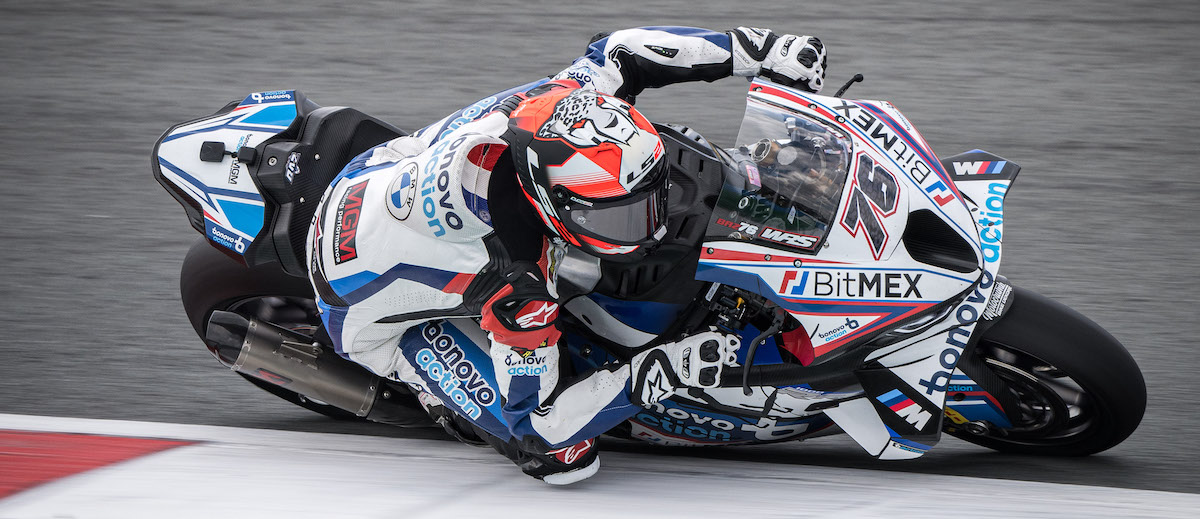
Throughout my track time, Ricardo supplied succinct feedback on my main issues, including all the above and some postural basics, like more consistently getting my upper body and head further inboard entering the faster corners. It was tremendously helpful to limit the list of things I was monitoring to just a few key items. A little confidence began to return as I reduced the jelly-to-toast ratio. I felt more relaxed, the fun factor increased, and I was both smoother and faster. It was gratifying to notice the chicken strips on my school bike’s fresh tires were much narrower than those on my bike at home (with identical rubber), and I’d been able to really feel those tires bite in several turns—a delicious sensation I hadn’t experienced in years.
Ricardo and I reviewed the morning over lunch on the BPC’s patio, soaking up the gloriously sunny, mild, early-October weather. (I should note canopies were set up for us with drinks and snacks at both the range and the track—very civilized!) As always, Ricardo engaged me with a perfect balance of professionalism and friendliness. His coaching was personalized, empathic, concrete, clear, and specific. He was straightforward and persistent in critiquing my mistakes, but always warmly encouraging and quick to acknowledge my progress.
On Day Two, Ricardo led me to a beautiful, deserted, twisty, ten-mile loop nestled in the foothills 45 minutes out of town. After a full lap, he let me decide whether to circulate the whole thing or run one particularly good mile of it back and forth; I chose the latter. Again, we took turns following each other and discussed how I’d done after each stretch. Given the big jump in complexity, I couldn’t regain the level of confidence I’d achieved on the track, but repetition did yield increasing comfort and improved performance. I was able to build upon the prior day’s lessons, more easily remembering to pull myself up and outward with the throttle, instead of reflexively cutting power, and I found my eyes more cooperative in looking further through each corner. Ricardo added one slightly exotic technique to my repertoire, trail braking with the rear brake. I’d only used the front for trail braking in the past but found the less powerful rear helped me avoid my habitual over-slowing during corner entry. It also allowed me to employ a forgotten stabilizing trick—playing slightly positive throttle against a touch of rear brake, as one might commonly due executing a U-turn.
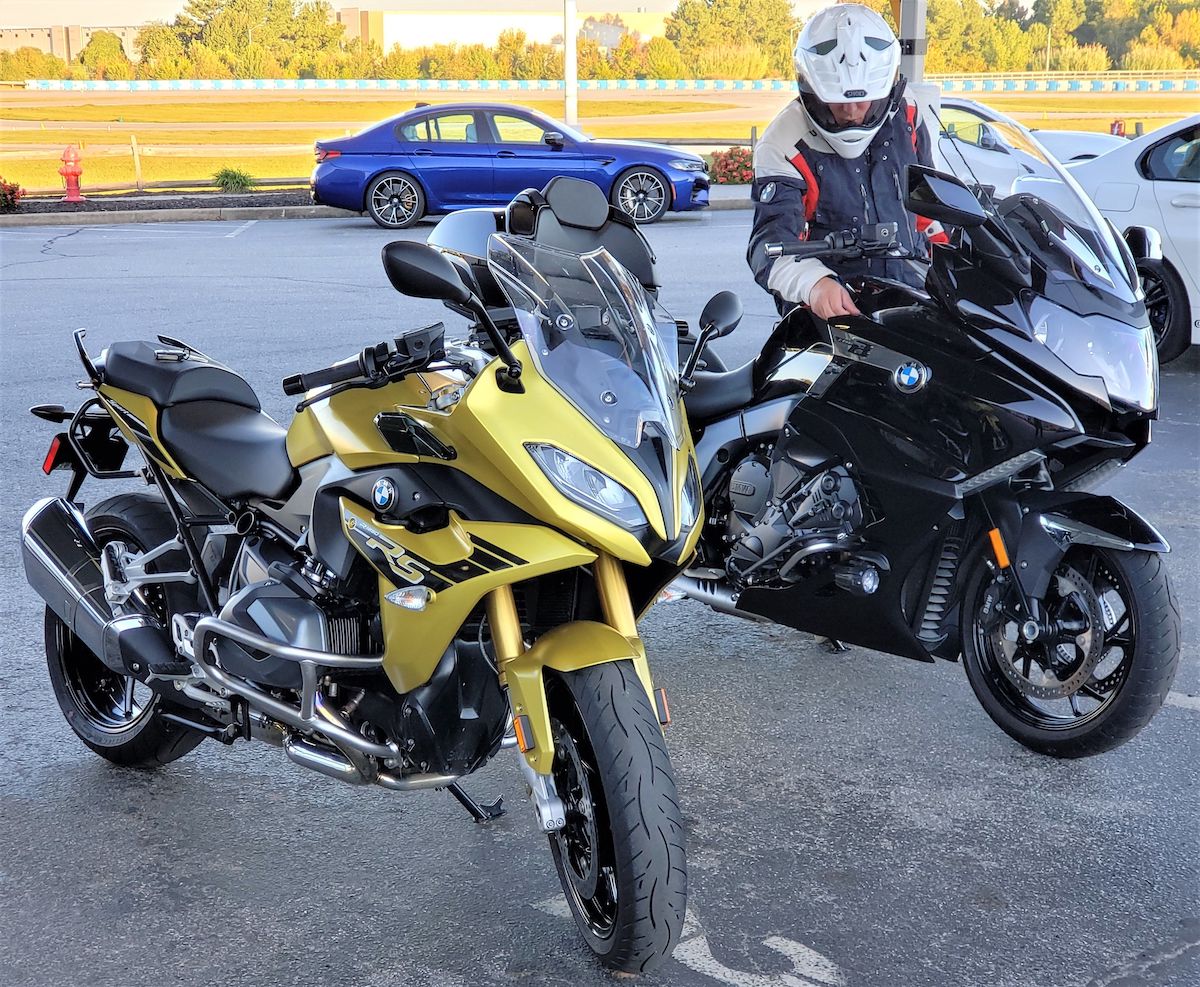
Back at the BPC, Ricardo presented me with a bag of swag and a certificate of completion of the program, which would be required for reimbursement from the Paul Bachorz Grant and could reduce a rider’s insurance premium if their policy offered a safety training discount. Two half-days of work wasn’t enough to eradicate my problems, but it was sufficient to get me oriented and focused. Now it’s a matter of practicing at home, wearing in the grooves that seem to have been cross-threaded by my surgery (and/or the severe concussion which preceded it). Given the transient vision problems I suffered post-op and the centrality of visual-spatial processing errors revealed during my training, this may be the category of brain circuitry that sustained subtle damage. Also suspect are areas devoted to attention/concentration and prioritizing. Cornering a motorcycle is apparently the only activity in my current routine that demands enough from these circuits to expose impairment. Fortunately, brains are quite plastic, and have an amazing capacity for developing workarounds for damaged connections.
I’m deeply grateful to Ricardo for providing such sensitive and helpful instruction, and for the BPC staff and facility that made everything possible. My training would have been worthwhile at the full $1,400 price, but it was a great bargain with the $200 rally discount and $250 Paul Bachorz Grant scholarship. I highly recommend motorcyclists looking for custom-tailored training contact BMW’s US Rider Academy to investigate the available options. Forego a few farkles and invest in yourself!
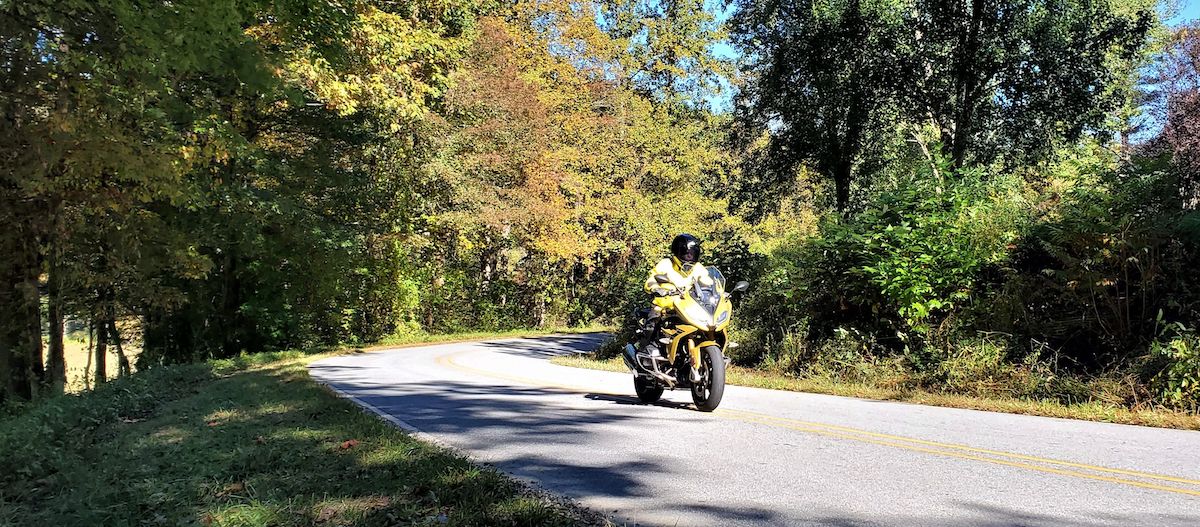
Mark Barnes is a clinical psychologist and motojournalist. To read more of his writings, check out his book Why We Ride: A Psychologist Explains the Motorcyclist’s Mind and the Love Affair Between Rider, Bike and Road, currently available in paperback through Amazon and other retailers.

